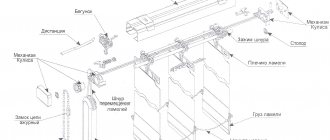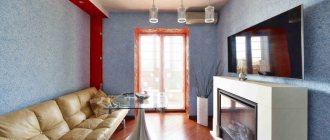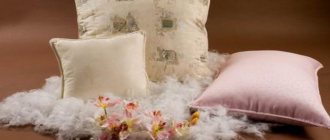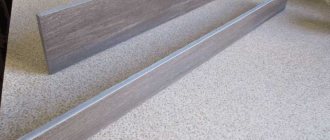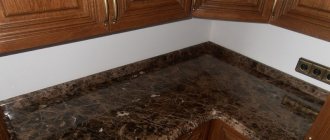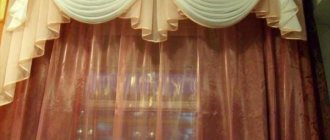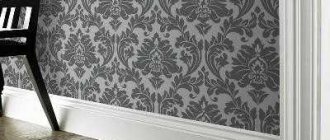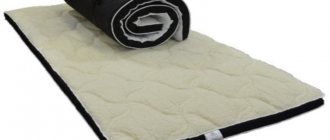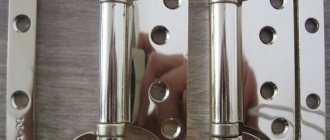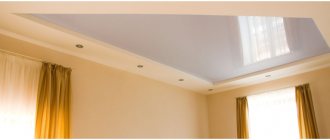For quite a long time, the ceilings in all apartments were decorated in the same way. As a rule, everything was solved something like this: they painted the surface with whitewash (sometimes they chose water-based paint for this), and it was customary to repaint all this after a few years.
Some time passed, a new fashion arose - ceilings began to be covered with wallpaper (washable). A little later, various panels appeared, which began to be actively used for pasting ceilings. And then suspended ceilings began to be sold on the building materials market.
Despite the fact that the consumer, in principle, has a large choice (there are already quite a lot of finishing technologies), many ceilings even today look somewhat monotonous. Ceiling molding is a great way to decorate almost any ceiling surface.
For many owners, it is the final stages of renovation that are very important, because the main task of these stages is to somehow highlight and emphasize the new design in the room. The plinth for the ceiling is just such an element. First of all, the ceiling fillet is needed in order to hide the gaps between the ceiling and the wallpaper, since the walls in our houses, unfortunately, almost always have some kind of defects: roughness, bevels. In addition, molding is a decorative product; without it, the ceiling is unlikely to have a finished look. It is because of this that every owner should know how to choose the right ceiling plinth for his home, so that everything in the design looks harmonious.
A job well done: the molding frames the corners beautifully
What is molding
Ceiling moldings are plastic cornices that can be glued either to the ceiling or to the joint between the ceiling and the wall. Today, ceiling molding is usually made of polyurethane, which results in a very light design element for apartments that can be glued without problems using the simplest (universal) glue.
Many manufacturing companies bring to the market not only ceiling moldings, but also a rather impressive imitation of stucco molding (also made from polyurethane). Various structural elements made from this material are distinguished by their low weight, interesting appearance, and moderate cost - that is, in our time, almost anyone can decorate their ceiling with imitation stucco molding without serious financial investments.
Most often, ceiling moldings are made in white, but sometimes some parts of these products are painted gold: this is how they achieve an imitation of classic stucco.
Modern technologies really make it possible to create a very natural imitation of almost any stucco. That is, if you want, you can create an amazing interior in your apartment - antique or medieval. As a rule, at the production stage, the ceiling molding is primed: thanks to this, in the future the product can be painted in almost any color without any difficulties.
Molding installation process
Before installing moldings on the ceiling begins, it is important to calculate the amount of material needed. To do this, the perimeter of the entire ceiling plane is measured, then the number is divided by the length of the fillet (standard 2 m) - the result is the sum of the elements.
If a fractional quantity comes out, it is rounded up to take into account additional materials for decorating the corner joints.
Installation method:
- On top of the finishing decor. In this case, you do not have to level the surface of the wall so that the fillets lie as evenly as possible.
- On the wall. This option guarantees better adhesion, but will require more work: leveling the wall, priming.
Advice! If the owner plans to change the wall decor from time to time, then the moldings are attached using the second method. This makes it possible to change the finish coating without removing the ceiling fillets.
How to trim corners:
- Using a miter box, determine the degree of cut of the corner of the molding. Cutting tool – suitable for the insert material.
- The second element, joined to the first, also needs to be cut at the same angle so that the grooves are invisible. Any deviation in degrees will result in unevenness and the fillets will not be able to be joined.
Advice! Craftsmen advise making a corner sample from molding scraps in order to quickly cut all the necessary corners using it.
Ceiling finish:
- Before starting work, you need to prime the base or at least treat it with water.
- First of all, the corners are formed. Installation with universal glue, liquid nails or finishing putty. In the latter case, the mixture is applied to the wall, and molding is pressed on top of it. Remove any remaining compound and fill the gaps between the wall and the molding with putty.
- The longitudinal fillets are glued so that the joints coincide exactly.
- Wipe corner cracks and interpanel joints with a damp cloth.
Instead of putty, you can use acrylic sealant - the process will be faster. Heavy lamellas sit on self-tapping screws, and the cracks are also sealed with putty.
Materials from which ceiling plinths are made today
Let's start our review of ceiling fillets with those products that can be easily found on the market today. Let's look at the materials that are used to make ceiling plinths. What’s good is that the choice here is really great: you can buy skirting boards made of foam plastic, polyurethane, polystyrene - among buyers, all these products have universal status. For those who do not like standard solutions, ceiling moldings made of wood and plaster are ideal.
Ceiling skirting boards are made from different materials: the cheapest are plastic and PVC products
Foam plastic ceiling plinth
Imitation of stucco will not cost much
If you have not yet decided which ceiling molding to choose for your apartment in order to effectively complete the renovation with minimal costs, be sure to pay attention to foam moldings. This material can be called very cheap, but it is quite easy to process: to perform cutting, for example, it is enough to use an ordinary sharp knife.
If we talk about the disadvantages of foam skirting boards, we can note the fire hazard - foam burns very well (the same applies to wood, which is also often used to make ceiling skirting boards). Another disadvantage of foam plastic is low mechanical strength. However, if the product is used in an apartment for its intended purpose, this lack of material can be ignored.
Remember that foam ceiling moldings are very susceptible to constant contact. If the ceiling molding is installed at a level where the fillet is in contact with the residents of the house, the ceiling plinth will be used incorrectly. In this case, it is better to completely stop using plastic products in the house.
Ceiling plinths made of polystyrene, injection molding
Skirting boards made of polystyrene are made from raw materials using the extrusion method. Such products have a clearly defined relief, but the surface is matte and very smooth. This plinth is harder than foam.
The advantage of using polystyrene foam ceiling skirting boards is that the products are very cheap. However, when compared with polystyrene foam, products made from polystyrene foam will be expensive.
Polystyrene or injection molding - each owner answers this question independently
Polystyrene is good because it cannot support combustion. That is, if a fire occurs, the fire will go out quickly enough. However, such a plinth cannot be considered completely safe in terms of fires - it burns in a flame, even slowly. If we talk about strength, polystyrene is much stronger than foam plastic, so it cannot be crushed by an accidental touch; it can be easily cut with any sharp knife. For all these reasons, polystyrene is often used to make both fillets and borders.
Injection ceiling plinth is a type of polystyrene baguette made by injection. These moldings have a strength similar to polystyrene foam, but at the same time they are more plastic. Due to this, this ceiling molding can be used for installation on a wall that is built in a semicircle. It is not afraid of moisture and is not subject to combustion. The cost of injection ceiling plinth is approximately at the average level.
PVC moldings
Ceiling plinths made of PVC can be called the most economical option. These baguettes are produced in different colors, and the surface of the cornice can also have a variety of patterns. This plinth can be a natural imitation of wood or marble.
The positive side of PVC molding is that it is not expensive, it is quite easy to install, and there are many colors available. In addition, the material itself is hygroscopic.
There are also disadvantages - for example, if you want to repaint the PVC molding, nothing will work. These products are also afraid of high and low temperatures - be sure to take this into account before purchasing.
Polyurethane skirting boards
Ceiling skirting boards made of polyurethane are distinguished by fairly high flexibility and strength (when compared with analogues made of polystyrene). Everything is simple here - when polyurethane foam is created, two components are used. One such important component is rubber. Thus, you can significantly make your work on finishing the room easier if you use polyurethane ceiling cornices - if your room has a lot of curved, broken lines.
We bring to your attention a thematic video: specialists are installing stucco molding, which is made of polyurethane.
Another interesting fact is that in general all types of ceiling fillets, which are made from polyurethane foam, do not absorb moisture and tolerate temperature fluctuations very well.
In addition to flexibility and strength, another important advantage of the material is its hygroscopicity. For these reasons, these moldings are often used to decorate ceilings in rooms where there is a high level of humidity - in swimming pools, bathrooms and more. The disadvantage of polyurethane is its high cost (compared to products made from polystyrene).
Plaster moldings
Lepinina has always been valued and looks more than worthy
Any owner who is planning a renovation and deciding which home finishing technique to choose wants only one thing - to focus on individual style and his own refined taste. Among the effective ways of self-expression is plaster stucco - or rather, the use of this material in your design. Ceiling skirting boards are also made from this material today. Gypsum is a very flexible material and can be used to create truly impressive works.
Ceiling plinths made of gypsum are in great demand - not only among end consumers, but also among manufacturers. The main advantage of these products is that they are all of high quality, and the material itself is completely safe from an environmental point of view. With all this, the owner can always get a unique room design that will last for a long time.
Gypsum molding will cost more than a plastic product
But even gypsum has certain disadvantages, now we will look at them:
- High price
- Quite heavy weight
- The material is fragile; if installation is carried out carelessly, the product may be damaged.
To complement your ceiling plinths, you can always buy additional rosettes and beams - with this approach, everything in the room will be done in the same style.
Wooden ceiling molding
Many consumers often choose moldings made of wood - despite the fact that today there are many types of moldings made from other materials that are cheaper. Wooden ceiling plinths are the most expensive products on the market today. There is a wide range of prices: for example, a carved plinth made of mahogany and ordinary spruce moldings will differ tens of times in cost.
If wood predominates in the interior, the ceiling plinth should correspond to the general trend
How can one explain this state of affairs? For those in the know, everything is obvious - wood is considered an elite material that only aristocrats can afford - a room with wooden moldings takes on a certain pomp. First of all, this is very important for those types of wood that are recognized as noble: mahogany, oak, ash. Wooden fillets made of pine or veneer are also in great demand - they dictate high consumer characteristics to all similar materials: strength, environmental friendliness, durability, aesthetics.
If you want to save money, it is better to choose a high-quality imitation of any breed
Today, wooden products often undergo special treatment with ultraviolet hardening - this helps to increase the protective properties of wooden ceiling plinths from various negative environmental factors.
The surface of the wooden molding has impressive resistance to damage and is quite easy to clean - this is also very much appreciated by buyers.
Different shapes of baguette make the room unique
Now let's look at the disadvantages of ceiling plinths made of wood. The most noticeable drawback concerns plasticity. In addition, processing wooden skirting boards is much more difficult than processing products made from any other materials. If in some other case the cracks that arise can be easily covered with putty, this will not work with wood, especially if you have some noble variety at home. Such wood does not forgive mistakes. The fact is that any roughness will be immediately noticeable on the baseboard, especially if it has a complex texture - you don’t even have to try to select the tone of the putty: the most accurate selection is unlikely to give the expected result.
What also cannot be ignored is that wood is susceptible to mold growth, rotting, and attacks from various insects. Wood often warps if the humidity level in a room changes. That is why, when wooden skirting boards are installed in a house, it is necessary to treat it with antiseptics, as well as apply several layers of varnish to the molding - this way you can significantly neutralize all the unpleasant features of the wood.
Related video - demonstration of how plaster molding is glued to a wall. When working with the ceiling, you have to follow a similar scenario.
If we are talking about how to choose a ceiling plinth, we must not forget that there are different methods of fastening. That is, polystyrene foam and polystyrene are glued to putty very simply (or to the wall using universal glue). Moreover, such products weigh very little - before the glue dries, you can completely dispense with additional fixation. But if we talk about wooden molding, everything is different here: it is necessary to use a hammer drill, perform preliminary installation of fasteners (then a wooden molding is screwed to the fastener, maintaining an interval of no more than 50 cm).
Ceiling molding made of wood will cost the most, but the result is really worth it
Plastic cable channels
Plastic cable channels will fit into the interior if they are run around the entire perimeter of the room instead of baseboards. These are plastic housings for protecting and hiding indoor wiring, closed with a lid. The size and color can be selected according to the design of the room. For convenient fastening to them, you can purchase corners and swivel mounts separately.
Advantages of channels:
- If they are fixed between the wall and the ceiling, they will aesthetically hide cracks and defects after repairs.
- The wires are neatly hidden, there is no need for a large number of extension cords.
- If the cable channels are around the entire room, then, if desired, you can easily add the necessary wires anywhere or install additional sconces.
Molding: scope
Above we talked about what types of ceiling plinths are depending on what material they are made of. Now let's talk about where exactly it is customary to use this or that type of fillet.
- PVC fillets. Products made of polyvinyl chloride, as a rule, can be seen on a homogeneous PVC lining. The intended purpose of this product is not only to decorate the surface. This baguette simultaneously acts as a profile into which the lining will also be inserted. It is usually attached to mounting brackets or screws. Ceiling moldings for suspended ceilings would also be appropriate here.
- Foam baguette. Such products are used most often to finish false ceilings, suspended ceilings that are made of plasterboard, as well as surfaces that have been puttied directly onto a concrete slab. The plastic ceiling plinth is mounted on a solution of putty or alabaster. This type of fastening is very convenient and practical - the fastening is carried out on a homogeneous material. In the future, everything can be painted - this is also appreciated.
- Wooden plinth. Ceiling fillets made of wood can also be safely classified as classic decoration elements. Mounting options may vary. If desired, you can choose glue, nails (wooden or metal), and screws. In modern construction, such moldings are most often used to frame floors. Wooden elements in the decor also look appropriate on the ceiling - in those situations where the surface of the ceiling itself is lined with wood (this is not common today when compared with other popular finishing options).
- Expanded polystyrene baguettes are perfect for those surfaces that have a plaster or plastic coating. This material is known as a very communicative compound, so its derivatives behave quite confidently when they are attached to glue or installed directly on gypsum mortar. Which of these options you will use depends only on the materials from which the ceiling surface is made.
- Polyurethane skirting boards are used where there are plastic floors. This includes PVC lining surfaces and suspended ceilings. The ceiling polyurethane plinth is attached using glue, which is designed for working with PVC.
- Gypsum fillet - such products rightfully deserve the status of true classics of the genre. You may have already seen these decorative decorations in various museums: for example, in the chambers of the kings. Of course, there they are made by the hands of great masters. The conclusion suggests itself: gypsum baguettes have been used in decoration for a very long time.
Today, these products are a spectacular frame for figured sculpture. What’s most interesting is that gypsum ceiling plinths are used not only to frame corners, they are also used in the overall composition as artistic elements. Such products are attached only to gypsum solutions (putty, alabaster).
Types of moldings
Before we begin describing the installation work, it is necessary to understand the types of these products. Since they are made from various materials that differ from each other in structure, density, weight and other parameters, different compositions are used for installation. Installation techniques also vary somewhat. Here are the moldings on the market today:
Extruded polystyrene foam
- Expanded polystyrene moldings are the simplest material available for little money. These products are very light, easy to install, but are fire hazardous. Polystyrene is used pressed and extruded. The first option is characterized by a granular texture and fragility, while the second has a uniform structure and good elasticity.
Polyurethane
- Polyurethane moldings - this option is one of the most expensive in the class. The main feature of polyurethane foam is its high elasticity, due to which the material bends in an arc. It can be mounted on curved surfaces, as well as in places where radial bending is required - for example, around an arched opening. The cost of one polyurethane molding will vary from 1000 to 2000 rubles, with an element length of 2-2.5 m.
- Another popular type of moldings is plastic. They have a finished appearance - their surface is covered with decorative paint, often in combination with gilding. The patterns on the skirting boards are presented in the form of complex patterns, which allows them to be combined with classic interior styles. This type of moldings is characterized by high strength, durability and ease of installation. The disadvantages include high rigidity, due to which the products are difficult to install on surfaces that have small and especially large deformations. The product is simply not able to replicate them, which causes cracks to form that are difficult or even impossible to repair. Similar products are also produced from polyurethane foam, which also belongs to the category of plastics, if classified according to a chemist’s reference book.
MDF decor
- MDF - these products are no different in appearance from the previous version. They can only be used in dry rooms.
Carved decor
- For interiors in which wood trim predominates, a huge number of wooden moldings made from the same material are sold. These elements are also demanding on the evenness of the base, because they lack any flexibility; however, due to the fact that wooden cladding, in principle, requires the presence of cracks, even non-technological connections will not be striking, standing out against the background of the wall.
Aluminum slats
- An exotic version of moldings are metal products that have a specific shape and can be used in such modern styles as loft, hi-tech, etc. The metal will also not bend, which means that the walls need to be prepared very well for it.
Plaster decor for wall framing
- From time immemorial, stucco molding has been made from gypsum, and even today this material is actively used in construction and repair. Plaster looks very beautiful and rich. Due to the fact that moldings are made from a solution diluted to a liquid state, designers can create any, even the most complex shapes. This decor has a lot of weight, so it is necessary to provide a high-quality, solid base. Despite its rigidity and fragility, gypsum can be installed even on uneven walls, since all cracks and visible defects are covered with putty.
About the width of ceiling skirting boards
It doesn’t matter what type of ceiling molding we are talking about, the standard length is usually 200 cm. On sale you can find baguettes whose width starts from 10 mm (sometimes even less) and ends somewhere within 200 mm. When buying ceiling fillets, it is recommended to look very carefully at the width. Let's talk about in what cases it is recommended to use wide moldings:
The width of the ceiling plinth is very important - this point cannot be ignored!
- A wide ceiling plinth helps smooth out corners (even visually). After installation, the room will look rounded and the atmosphere will be calming. The point is that the human psyche is very susceptible to such things - roundness is calming: any specialist in the field of design will confirm this.
- Thanks to the wide baguette, you can hide various defects and uneven joints - where the ceiling surface connects to the wall. The most striking thing is the differences in height levels - any finisher will confirm this.
- If you want to disguise the joints of the suspended ceiling and walls, it's time to purchase wide baseboards.
Before choosing any particular version of the ceiling plinth for your room, it is important to understand one simple thing: a person perceives the size of a room based on two horizontal surfaces. One of them is the ceiling. That is, the room will be visually smaller if there is a wide plinth on the ceiling.
When choosing the width of the ceiling molding, the height of the room is also taken into account. If the ceiling in the room is low, it is hardly worth installing a wide baseboard - it will look too bulky. Because of this, in rooms that are not very spacious, where there are also low ceilings, it is better to install thin baguettes - larger products will reduce the visual height of the ceilings even more. That is, for a small room it is not recommended that the height of the plinth exceed 0.35 cm.
If the room has a high ceiling (somewhere in the hall, for example), moldings with a height of about 0.7 cm will look great. If the average height of the room is two and a half, three meters, the recommended size of the ceiling plinth in terms of height should be from 0.4 to 0.6 cm.
If we are talking about an apartment where the ceiling height is more than three meters, you can safely choose a higher molding: the fillet dimensions can be 60-70 mm.
Why do you need molding?
Its main purpose is to separate one surface from another. For example, baseboard is used to separate a wall from the ceiling and floor, and limit molding is used to separate a wall with one type of finish from another wall.
The second purpose is to cover cracks, ends and joints. This purpose is fulfilled by door frames, linoleum moldings, and corner joints in various finishing systems. The third application is to use it to decorate a room.
For example, an ordinary arch in a house does not look too flashy and is already ordinary. However, if you decorate it with the help of molding, you can emphasize this element and highlight it from the overall picture of the room.
A small room can be visually made more spacious by installing longitudinal moldings along the walls - this will make them appear longer. Conversely, too large a surface can be divided into parts by decorating it with crosswise moldings.
Shades of ceiling fillets
Ceiling lighting that highlights the baseboard
When you have decided on the material and found out everything about the width of the optimal ceiling plinth for you, it’s time to think about painting the products. Perhaps a universal option – a white baguette – will suit you perfectly. Or is it better to choose a bright baseboard for a backlit ceiling? When choosing the color of a baguette, experts advise relying on the following recommendations:
- A white baseboard, which usually matches the shade of the ceiling, allows you to optically increase the height of the room. That is, if the height of your room is about 250 cm, it’s time to buy white ceiling molding.
- A dark and wide molding, which matches the walls in color, slightly reduces the ceiling surface: because of this, this plinth looks ideal in rooms where the ceilings are high. The room will be subjectively perceived as small, in the context of its actual overall dimensions.
- Ceiling skirting boards in contrasting colors (for example, the color of bog oak) in a room where light ceilings and walls, if the height of the room is sufficient, will look very interesting. But the contrasting tone of the baguette should combine well with some other details in the interior.
- Do not forget that any room should have no more than three primary colors, otherwise it will be too colorful. When purchasing ceiling molding, keep this design rule in mind. However, black and white shades go well with all other tones. The black color optically makes the room appear cramped and darker. By the way, it is because of this that household appliances are made mainly in white.
What to glue moldings to
All of the listed materials are attached primarily to mineral surfaces - with the exception of wooden solutions that are mounted on nails, screws, studs, and so on. From here we can draw a logical conclusion that the adhesive composition must have good adhesion, both to the base and to the material itself. Here's what's used to do this:
Finishing putty
- Gypsum putty is great not only for installing gypsum stucco, but also for polystyrene foam moldings. It fills all the unevenness of the base well. The disadvantages include poor resistance to deformation after the mixture hardens, which is why the same ceiling plinths often come off. If the walls of your house freeze in winter or, conversely, overheat excessively in the summer, it is better not to use putty, since over time it will all crack. The advantages of putty also include its cost - if you have at least a small bag of 20 kg, for which you will have to pay no more than 300 rubles, it will be enough to cover a huge house with moldings.
Acrylate based adhesive
- Liquid nail adhesive is an excellent solution for use with expanded polystyrene, polystyrene foam, plastic and metal moldings. The composition has a high fixing ability - the products stick instantly after the initial pressing. Such adhesives are divided into two types: acrylic-based and synthetic resin-based. The first option is white in color and has average grip strength. It should only be used for lightweight materials, such as polystyrene foam. Disadvantages of the solution include loss of strength over time and poor resistance to bending loads. Also, the composition turns yellow over time, so it is not recommended to use it as a putty, which, however, does not stop many craftsmen.
Decorating walls with moldings - especially strong synthetic-based adhesive
- Synthetic liquid nails have a thick, yellow-brown consistency. They hold very tightly and are used for plastic and metal moldings.
- Silicone sealants are a slightly non-standard option for these purposes, but if you need to glue the same plastic baseboard to a glossy surface, and at the same time ensure that the glue is not visible, you can do this with transparent silicone. This solution is not suitable for decor mounted on the ceiling, since the composition dries gradually and requires preliminary fixation of the parts. To solve this problem, use masking tape as an intermediate fastener.
- Mechanical fasteners - this includes screws and nails. They are used not only in conjunction with wooden and metal moldings, but also when installing foam and gypsum skirting boards. In the first case, such additional fixation prevents the decor from peeling off from the base as a result of heating and cooling. Gypsum skirting boards and other stucco molding, as mentioned earlier, are heavy, so you shouldn’t expect glue to hold them securely. To strengthen it, a self-tapping screw is screwed into the baseboard body, after which it is carefully closed with putty.
The installation technology for each of the listed types of glue will be described below.
How to choose molding?
To select a suitable ceiling decor for creating the interior of a room, you need to take into account two main criteria - the width of the plinth and the material used in its manufacture. Choosing molding is not difficult. So, if the room has smooth walls, and the owner gives preference to environmentally friendly materials, then it is better to purchase wooden fillets, but if the economic component comes first, then it would be advisable to use polyurethane decorative elements.
As for the size of the finishing material, its width directly depends on the height of the ceilings of the room being repaired. Moreover, the higher the room, the wider the molding. If we touch on the style of decorative plinth, then it all depends on the preferences and imagination of the homeowner.
Types of ceiling moldings
Master finishers most often divide ceiling moldings according to the degree of rigidity. The first group includes cornices made of polystyrene and polished wood. The second group is soft ceiling moldings; they are most often used for finishing, as they fit perfectly to the most uneven ceilings.
This group includes:
- Soft polyurethane linings and cornices;
- Decorative slats made of white and colored polyvinyl chloride;
- Foam curbs and bovelacci;
- Decor made of soft polystyrene foam.
In appearance, PPS is very similar to classic stucco versions, so the demand for this type of ceiling decoration remains high. The material is quite plastic, perfectly processed and glued to the wall, so there are practically no problems with decorating the transition line on the ceiling. Moreover, ceiling moldings, photos, in the interior add presence and “weight” to the room.
Ceiling improvement options
But the real favorite from the entire list of possible types of molding remains decorative cast polyurethane foam.
Benefits of using moldings
This is the name given to decorative elements that are picture frames, imitation stucco, and plinths.
The material helps to hide minor imperfections in decorative finishing, gaps, and joints. This is an excellent choice for decorating ceilings, framing mirrors, and doorways.
Sometimes they are used to zone a room and protect individual elements from mechanical damage. This helps visually change the shape of the space.
You can find models suitable for almost any type of repair.
The material has a different relief; you can use it to complement a room and delimit its parts.
